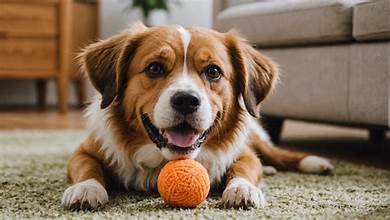Puzzle Toys (Treat Dispensers):
These toys require dogs to work for their food, stimulating their minds and preventing boredom.
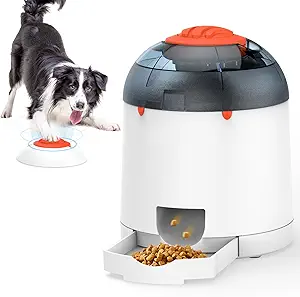
For seniors:
- Consider:
Look for toys with easy-to-manipulate mechanisms. Avoid anything that requires a lot of chewing or strength. Start with more straightforward puzzles and gradually increase the difficulty if your dog enjoys it. Washable materials are a must for hygiene.
- Benefits:
These toys benefit senior dogs by keeping their minds active, providing mental stimulation, and encouraging slow eating. This is particularly important for seniors with reduced activity levels and slower digestion.
Snuffle Mats:
These mats have fabric strips where you can hide kibble or treats. Dogs use their noses to “snuffle” and find the food.
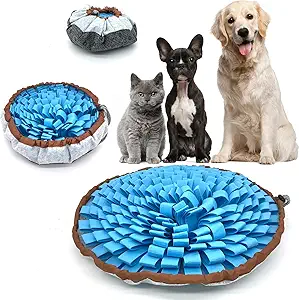
For seniors:
- Consider:
Choose mats with a soft, non-slip base. The fabric strips should be short and easy to navigate. Make sure the mat is machine washable.
- Benefits:
It encourages natural foraging behavior, provides mental stimulation, and can be calming.
Lick Mats:
These mats have textured surfaces, making them ideal for spreading soft foods like yogurt, peanut butter (xylitol-free!), or wet dog food.
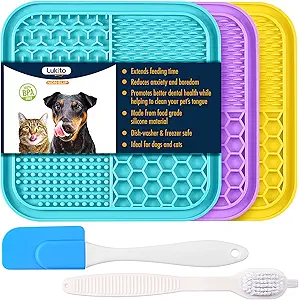
For seniors:
- Consider:
Look for mats made of food-grade silicone, which is easily cleaned and dishwasher-safe. The texture should also be gentle on sensitive gums.
- Benefits:
It provides mental stimulation, is calming, and is suitable for dogs that eat too quickly.
Interactive Feeders:
These can be bowls designed to slow eating or toys that dispense food as the dog plays.
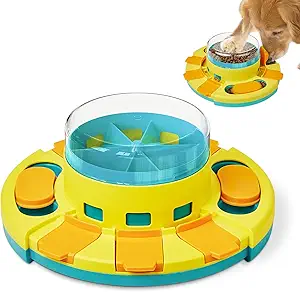
For seniors:
- Consider:
If using a slow feeder bowl, choose one with a low profile and rounded edges. For interactive feeders, prioritize ease of use and avoid anything that requires jumping or excessive movement.
- Benefits:
It slows down eating, can aid digestion, and provides mental enrichment.
Soft Plush Toys with Hidden Surprises:
Some plush toys have hidden compartments to place treats or other small toys.
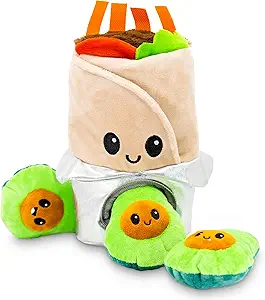
For seniors:
- Consider:
Choose plush toys made of durable, non-toxic materials. The hidden compartments should be easy to access and refill. Supervise your dog to ensure it doesn’t ingest stuffing or small parts.
- Benefits:
It provides comfort, encourages gentle play, and can stimulate their hunting instincts.
Key Considerations for Senior Dogs:
- Arthritis/Mobility:
Avoid toys that require a lot of running, jumping, or twisting.
- Dental Health:
Choose toys that are gentle on their teeth and gums. Avoid hard chew toys that could cause damage.
- Vision/Hearing:
If your dog has vision or hearing loss, choose toys that are brightly colored or make noise to attract their attention.
- Cognitive Decline:
Puzzle toys and snuffle mats can help keep their minds sharp and engaged.
Supervision:
Always supervise your dog when it is playing with a new toy, especially if it has any health issues or if the toy has small parts that could be a choking hazard.
Remember, your veterinarian is always there to help. They can provide specific recommendations based on your senior dog’s health and needs, ensuring you choose the best and safest options.

